This article has been translated from the original Japanese content.
This interview was conducted before the game was released.
In this 19th volume of Ask the Developer, an interview series in which developers convey in their own words Nintendo's thoughts about creating products and the unusual details they hone in on, we're talking to the developers behind the Donkey Kong Bananza game, a Nintendo Switch™ 2 game that launches on Thursday, July 17.
Check out the rest of the interview
Part 1: Chain of destruction
First, can you introduce yourselves?
Kenta Motokura (referred to as Motokura from this point on): Hello, I’m Kenta Motokura, the producer for Donkey Kong Bananza. Until now, I've mostly been involved in the development of 3D Mario (1) games, having directed Super Mario 3D World (2) and Super Mario Odyssey (3). In terms of Donkey Kong games, I worked on the character designs for Donkey Kong Jungle Beat (4). As the producer for Donkey Kong Bananza, I crafted the game's concept and set the direction for the overall structure and player controls.
(1) A term that refers to an action game in the Super Mario™ series in which Mario moves around in a 3D space. In contrast, 2D Mario games refer to side-scrolling 2D platformers in the same series.
(2) A Wii U™ game released in November 2013. In this 3D platformer, up to four players can explore the Sprixie Kingdom, a land full of surprises, where new transformations, such as Cat Mario and Double Mario, were introduced. Additional accessories may be required for multiplayer mode, sold separately. Super Mario 3D World + Bowser's Fury, which includes additional modes, was released on Nintendo Switch in February 2021.
(3) A Nintendo Switch™ game released in October 2017. In this 3D platformer, players join Mario and his hat-shaped ally Cappy on a globe-trotting adventure, exploring ancient ruins, big cities, and much more.
(4) Released in 2005 on the Nintendo GameCube™ system in Europe and North America. A Wii™ version of the game was released in May 2009 in North America and June 2009 in Europe. As Donkey Kong, players explore various kingdoms in the jungle, the clouds, and the ocean with the help of powerful moves like punches and shockwaves. The Nintendo GameCube version is played with the DK Bongos accessory, while the Wii version is controlled with unique actions that utilize motion controls.
Kazuya Takahashi (referred to as Takahashi from this point on): Hello, I’m Kazuya Takahashi, one of the directors for this game. I joined Nintendo in 2020, but before that, I worked on a broad spectrum of games, including open-world RPGs and arcade games. For this game, I gave direction on the game design and worked on the level design, cut scenes, and text creation.
Wataru Tanaka (referred to as Tanaka from this point on): Hello, I’m Wataru Tanaka, another of the game's directors. I've been involved in the development of several 3D Mario games since Super Mario Galaxy 2. For Super Mario Odyssey, I implemented player controls and directed the core system of action elements. As the programming director for Donkey Kong Bananza, I mostly provided direction on the processing performance and utilization of system functions for Nintendo Switch 2, as well as enemy behavior.
Daisuke Watanabe (referred to as Watanabe from this point on): Hello, I’m Daisuke Watanabe, the art director. I was in charge of character design in the Super Mario Galaxy series and joined Super Mario 3D World as the design lead. I oversaw Donkey Kong Bananza's overall art direction.
Naoto Kubo (referred to as Kubo from this point on): Hi, I’m Naoto Kubo, the sound director. I’ve previously composed music for Super Mario Maker and led the overall sound development for Super Mario Odyssey. As the sound director for Donkey Kong Bananza, I coordinated overall sound development and controlled quality. I also composed some of the game's music myself.
Thank you. It sounds like staff members who've previously worked on 3D Mario games, in particular Super Mario Odyssey, were central to Donkey Kong Bananza's development. But how is it that the 3D Mario development team ended up creating a new game in the Donkey Kong series?
Motokura: Development began when Koizumi-san (5) approached our team and said, “With an eye to expanding the Donkey Kong franchise further, I'd like the team that's been working on 3D Mario games to create a 3D Donkey Kong game.” The Donkey Kong series started with an arcade game created by Miyamoto-san (6). It featured a lot of things that were innovative for arcade games at the time, such as narrative-based gameplay and stage composition with varied design. Later on, we had success with the Donkey Kong Country series (7) developed with Rare Ltd. (8), and I think those titles also represented a significant innovation as Super NES games with unique visuals. So this time around, tasked with developing a Donkey Kong game ourselves, we decided we were going to aim for another big innovation.
We'd built up a lot of expertise in gameplay development for 3D action games through our work on 3D Mario games, including Super Mario Odyssey, but we needed to dive deeper into the fundamental question of “What is Donkey Kong?” So, our first step was to seek out Miyamoto-san and Koizumi-san.
(5) Yoshiaki Koizumi. Senior Executive Officer and Senior General Manager of the Entertainment Planning & Development Division. Served as the general producer for Nintendo Switch.
(6) Shigeru Miyamoto. Representative Director Fellow. Super Mario™, Donkey Kong™, The Legend of Zelda™, and Pikmin™ series creator.
(7) A game development company headquartered in the United Kingdom. In addition to the Donkey Kong Country series, the company has also developed games such as Banjo-Kazooie and GoldenEye007 for the Nintendo 64™ system. It later became a development studio under Microsoft.
(8) A series of action games released for the Super Nintendo Entertainment System™ from November 1994 through November 1996 in North America. Players adventure through the jungle as the mighty Donkey Kong and his friends.
And were you able to find out what Donkey Kong means to them?
Motokura: Miyamoto-san, who was also involved in the development of the Donkey Kong games created by Rare Ltd. and Retro Studios, Inc. (9), put great emphasis on Donkey Kong's moves, such as Hand Slaps and blowing on things.
Hearing that made me realize the wide range of moves Donkey Kong has at his disposal, and that there’s potential to expand them even further. Koizumi-san, who was involved in both Super Mario Odyssey and Donkey Kong Jungle Beat, highlighted Donkey Kong's massive arms as something that sets him apart from Mario. I felt that Koizumi-san put emphasis on Donkey Kong's strength, like delivering mighty punches or lifting heavy objects.
(9) A game development company located in Austin, Texas, United States. Founded in 1998, it has codeveloped games such as Donkey Kong Country Returns and mainline games from the Metroid Prime series.
I have the impression that the Donkey Kong series brings something new to the table with each installment. Where does this title fit in?
Motokura: Well now... In a long-running series, novelty and continuity are both important, but we wanted this title to fully convey the appeal of Donkey Kong as a character. Meanwhile, we thought that by creating something new, leveraging our experience developing 3D Mario games, we'd have the opportunity to create two separate branches – 2D Donkey Kong and 3D Donkey Kong – just as we did with Mario games. So, keeping in mind that this game will come to symbolize 3D Donkey Kong, and with the theme of bringing Donkey Kong's strengths and new actions to the forefront, we thought the concept of “destruction” would be a good fit.
So you aimed to develop a game that would leverage the unique aspects of Donkey Kong as a character. Speaking of which, Donkey Kong's character design has been given a makeover, right?
Watanabe: That was a hot topic of discussion. People's impressions of Donkey Kong actually vary quite significantly from person to person. Donkey Kong began life in the arcades as Mario's nemesis, but since then he's had many guises depending on the game, be that a cool, rugged king of the jungle or a lovable goofball. So, rather than just giving him a simple design update, we strove for a design that would get to the core of what makes Donkey Kong who he is, bringing out his unique characteristics and appeal.
Motokura: We also interviewed people who'd drawn illustrations of Donkey Kong from way back to preserve the image of Donkey Kong in the mind of his creator, Miyamoto-san.
Watanabe: We got no shortage of advice. From general guidance regarding his body frame and unique facial expressions, right down to the smallest detail, like how his pointy hairdo is essential...but you can't make it too long. (Laughs)
Everyone: (Laughs)
Motokura: Because the series has been played for such a long time, we pursued the “identity” of Donkey Kong himself in various aspects.
Watanabe: Also, as we were testing out various moves with a temporary character model in the early phases of development, it became apparent how much bigger Donkey Kong is than Mario, giving him a considerable on-screen presence. This meant we could properly showcase a wide range of facial expressions, and by combining them with powerful moves, we felt we could create something new in terms of game feel, too.
Motokura: When controlling a character in a 3D world, the player often sees them from behind, so we were also conscious of how Donkey Kong would look from the back while he's moving. The back view of Donkey Kong just looks like a mass of brown fur, which would make for a monotonous visual if we simply rendered him in 3D. That inspired us to make some creative adjustments to his outfit, such as giving him britches and suspenders. We also made his fur look rich and thick. Outside of this game, Donkey Kong has recently appeared in The Super Mario Bros. Movie released in 2023 and in Mario Kart World, but there's a basic character design which provided the foundation for those versions of Donkey Kong. That basic Donkey Kong design has been completely revamped. While overhauling the design, we returned to where it had all started. We took Miyamoto-san's original Donkey Kong as the basis, adding design elements from Donkey Kong Bananza here and there.
Does that mean that all of the recent Donkey Kong designs, including those from the movie and Mario Kart World, have their roots in the original one created by Miyamoto-san, with elements of Donkey Kong from Donkey Kong Bananza added to it?
Motokura: That's correct. Donkey Kong Bananza sparked the creation of a design which I think better conveys the new Donkey Kong.
His thick fur stands out compared to the previous design, making him look wilder. And yet, at first glance, his various facial expressions also give the impression that he's a comical and charming character. That said, I saw he can alter his appearance in this game by transforming.
Takahashi: Smashing lots of terrain and collecting gold fills up the Bananergy gauge, allowing Donkey Kong to perform Bananza transformations, in which he powers up by transforming into different animal forms. This idea emerged while we were searching for Donkey Kong's ability change. We were discussing how it might be fun if, once he transforms into a powerful Kong Bananza, he could deal out destruction in different ways, not just with regular punches, but with charge punches, piercing punches and the like. In Mario’s case, he progresses through the game by powering up and becoming bigger or using special abilities, but in this game, Donkey Kong can transform anywhere by harnessing the power of Bananza transformation. Being able to transform anywhere lets him chain together his destruction, which is the concept of this game. We thought that this chain of destruction would be compelling as an action game. And so it became one of the key gameplay elements we focused on in this title.

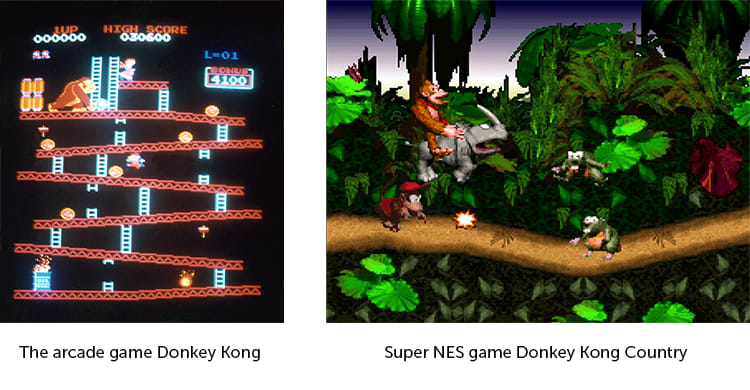
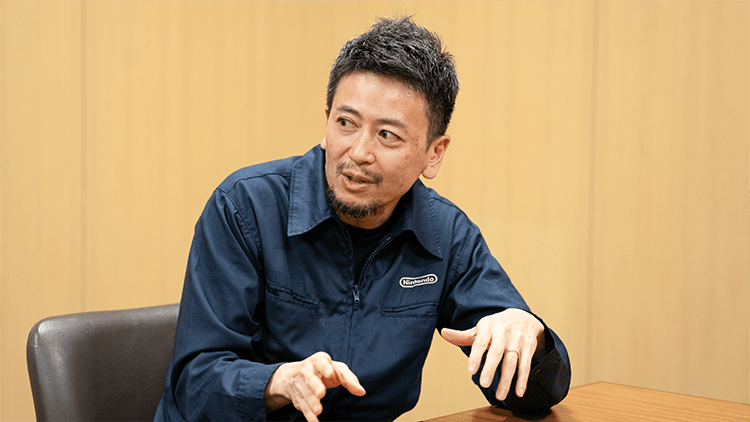
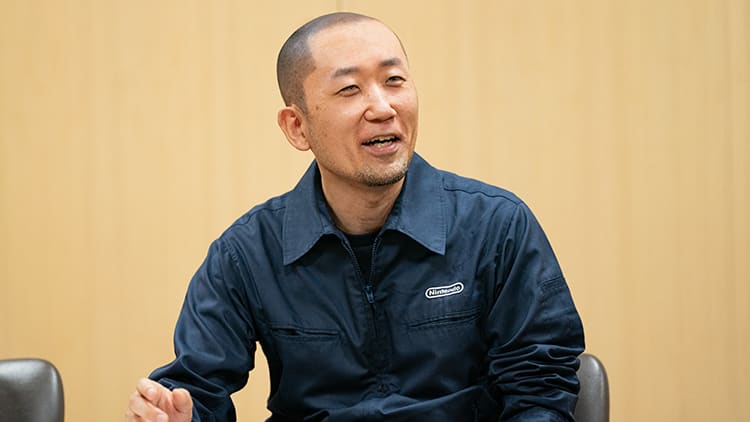
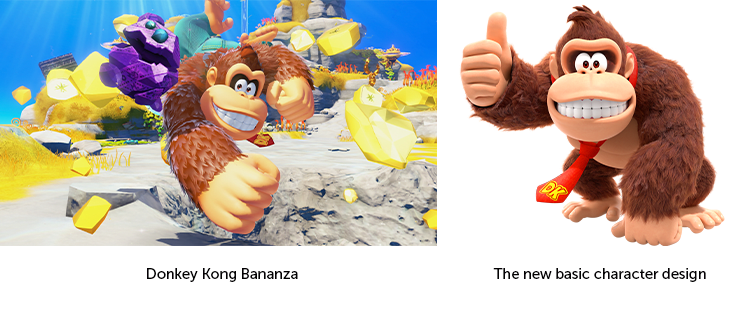
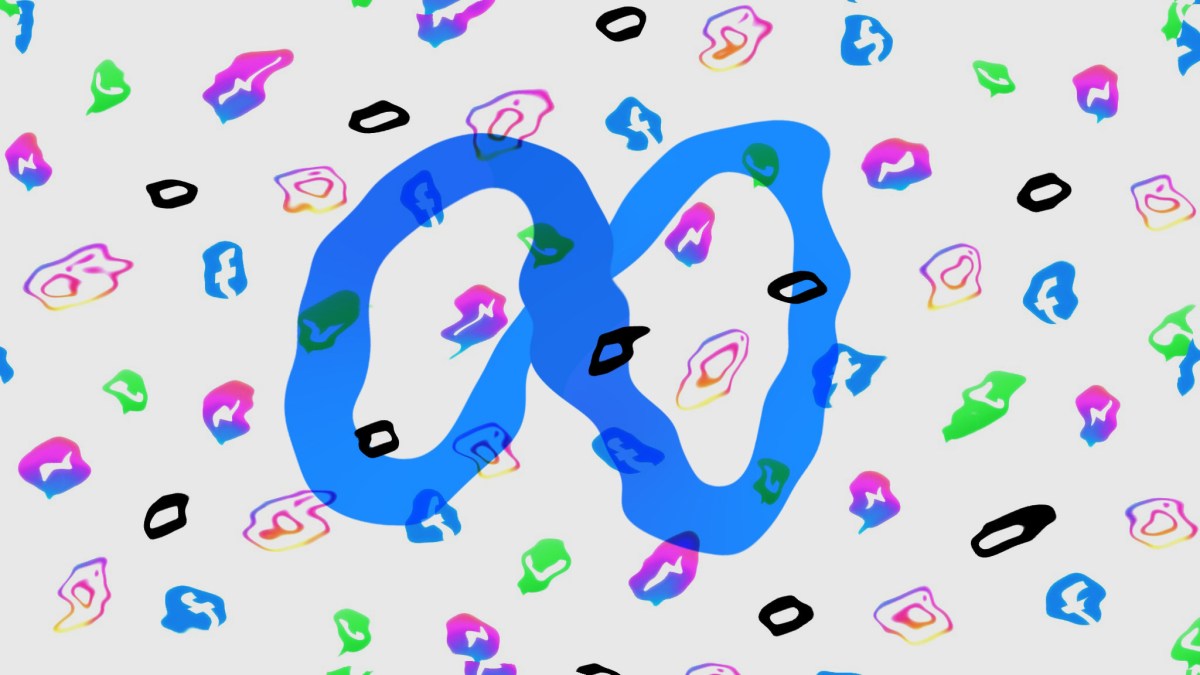
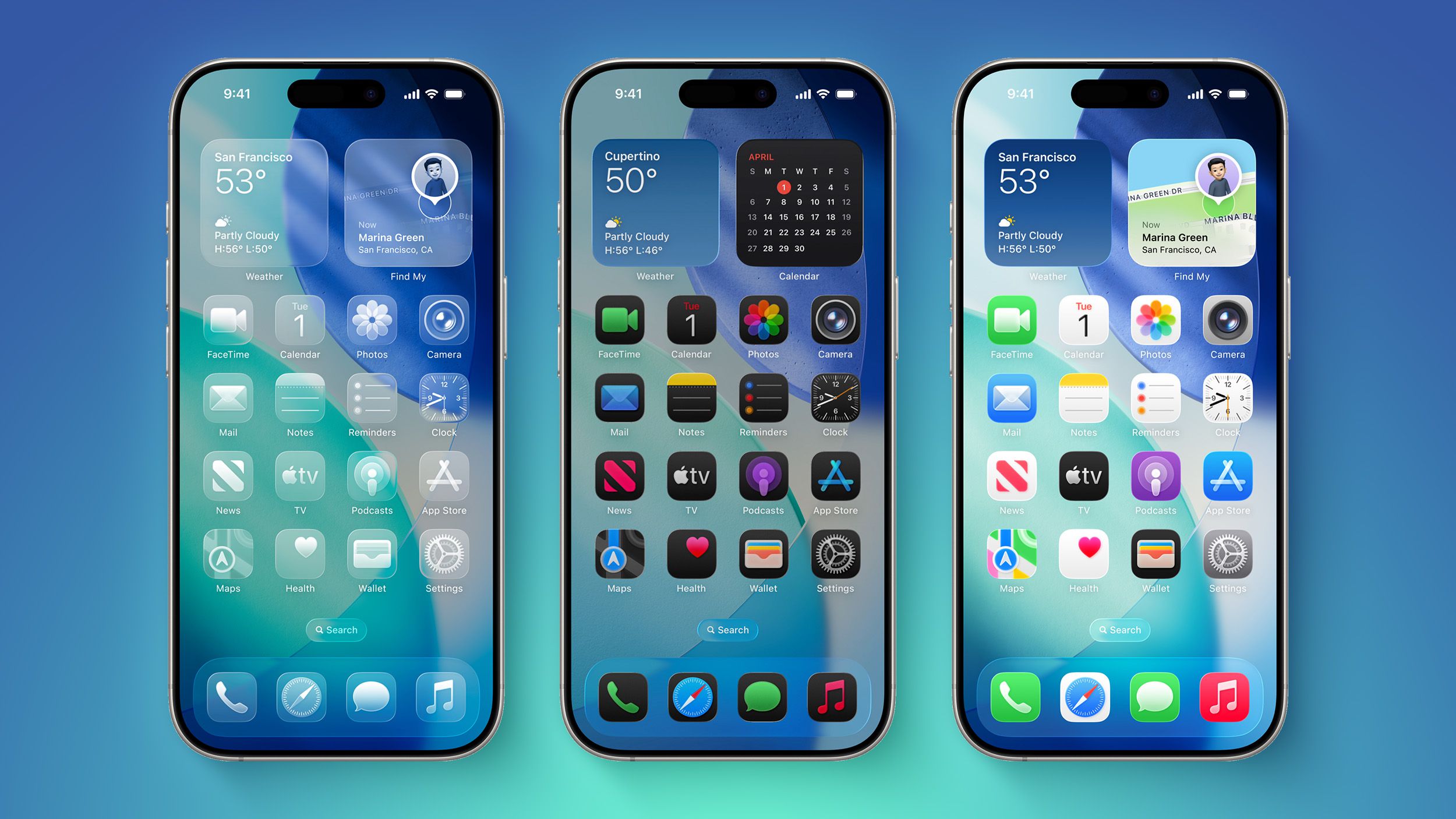

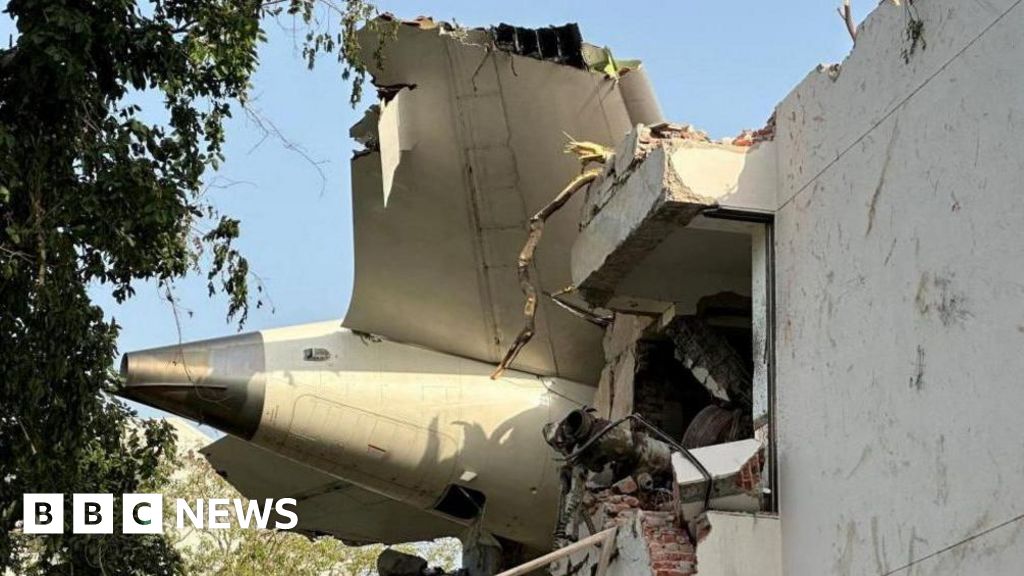


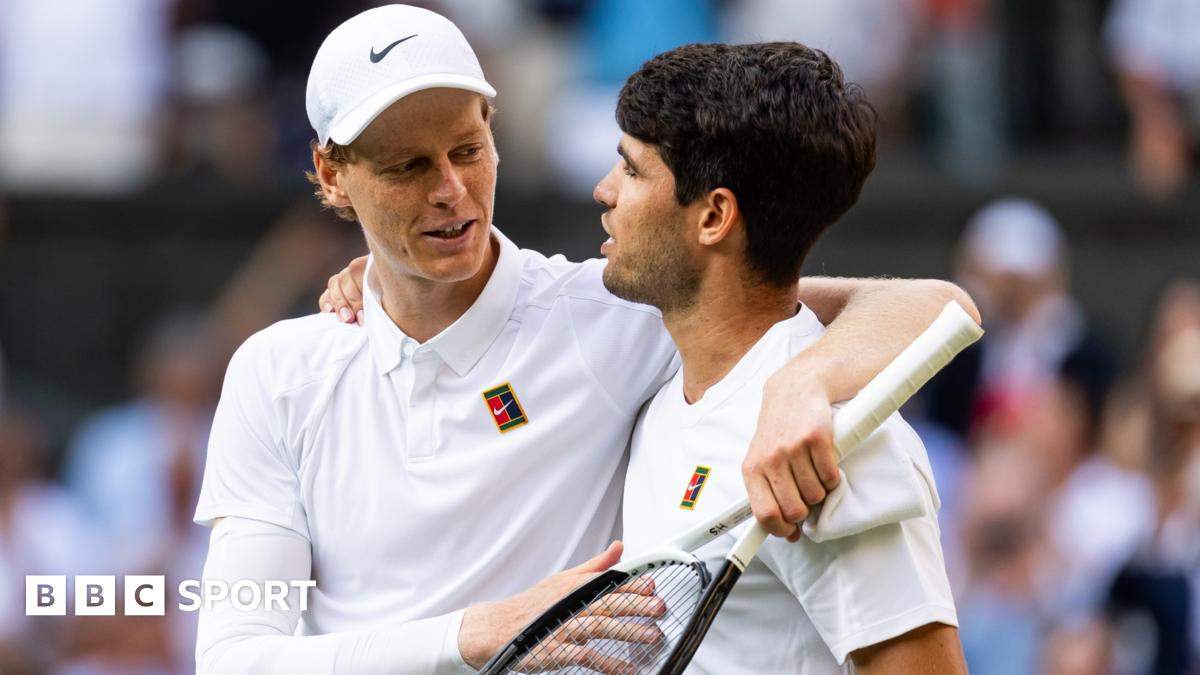

 English (US) ·
English (US) ·